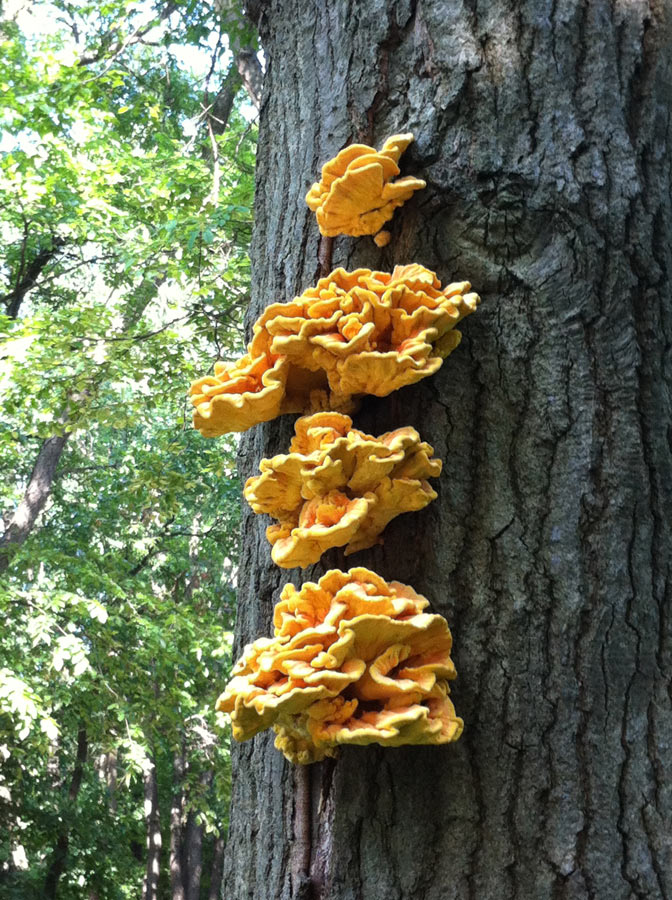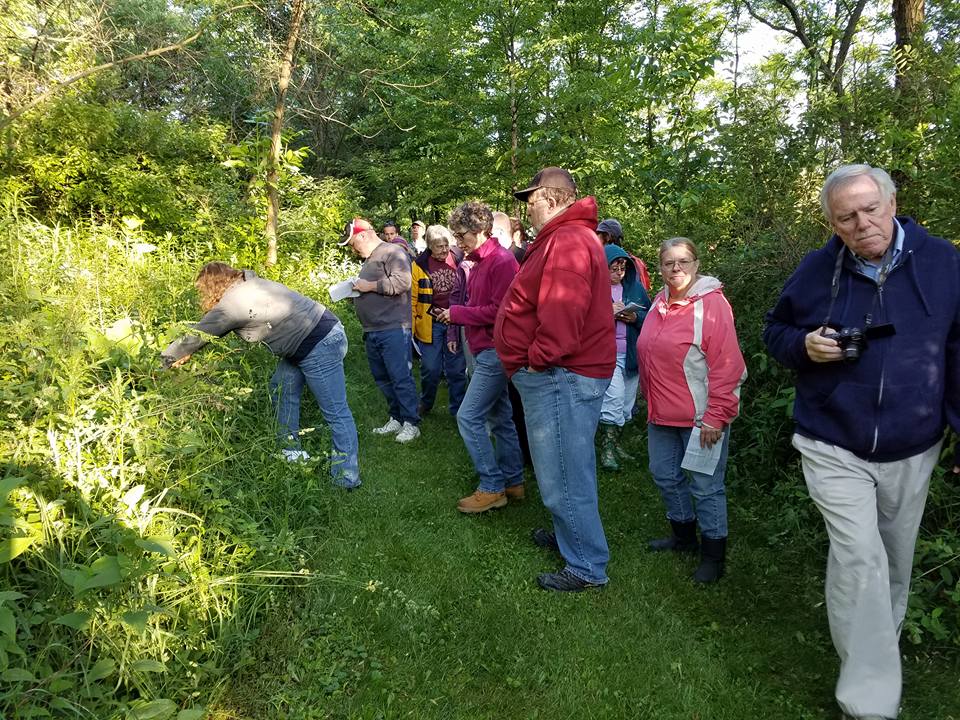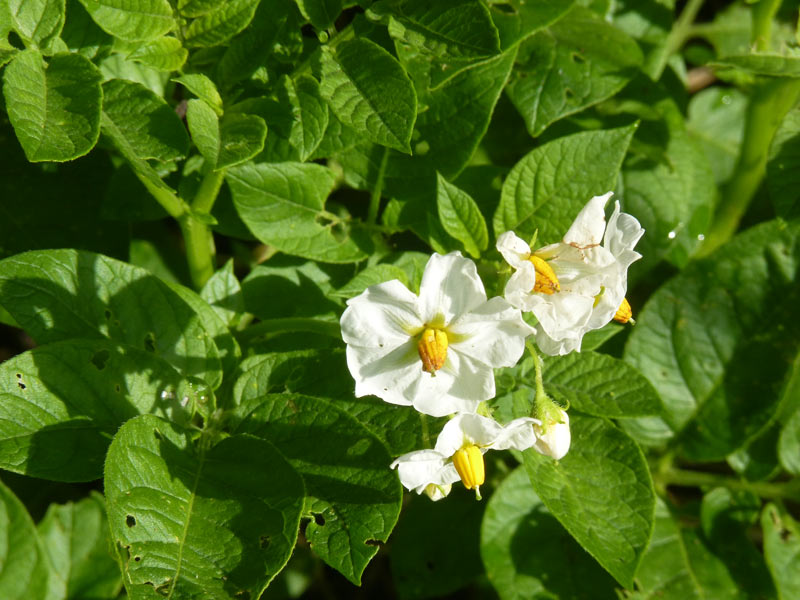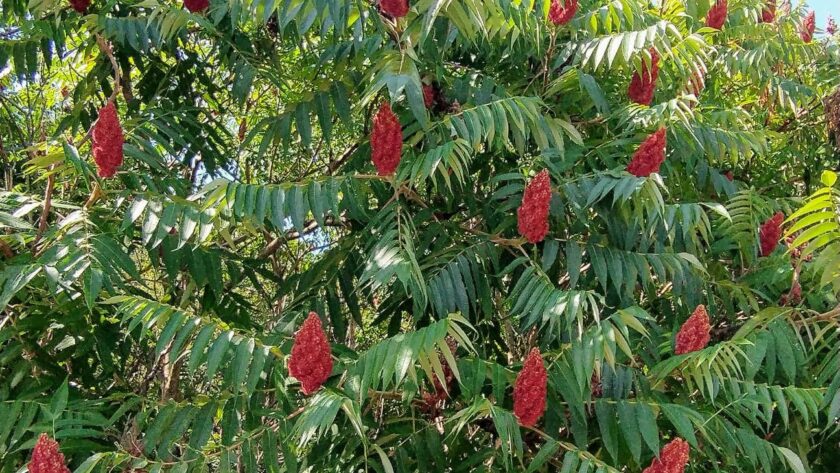
As any mushroom hunter knows, mushrooms are tricksy little buggers. What one looks like in one setting may not necessarily be what one looks like in another, depending on soil conditions, moisture, sun, size of the mushroom, insect damage, and/or regional variation. Mushroom species can vary a lot, even from one small region to another, and that variation can spell trouble for someone who hasn’t yet gained the wisdom to understand such variation. Mushroom books offer perhaps 1-2 photos of mushrooms, and a good book will also offer a mushroom hunter the “keys” (features that distinguish one mushroom from another, like attached gills, color, etc). However, only lived and true experience can help you not make a dangerous mistake when it comes to the mycelium kingdom. The difference here, I think, epitomizes two key things: the different aspects of nature wisdom, specifically, the difference between book knowledge and lived experience. But also, it epitomizes the importance of being rooted firmly in one’s local ecosystem and learning that ecosystem and from sources as connected to that specific ecosystem as possible. In last week’s post, we explored the four ways in which we can connect deeply through nature: through nature wisdom, nature activity, nature reciprocity, and nature reverence. This week, we’ll delve deeply into the idea of nature wisdom and its three aspects: knowing nature, understanding nature, and probing nature. We might frame this as a triad:
Three aspects of nature wisdom:
Lessons that come from others
Lessons that come from experience
Lessons that come from deep questions
Knowing Nature
Knowing nature includes the basic skills of identification and naming–all of which can be started to be gained through reading and study or from learning from others. For humans, being able to recognize something, and know its name, is a powerful act. For building my own nature knowledge, what I’ve done over a long period of time is commit to learning 15-20 new plants, trees, animal tracks, rocks, or other aspects of nature each year. After a few years, you will be able to learn more and more about trees, plants, animal tracks, and so on–and this knowledge really empowers you. In 5 years with this method, you could know 100 or more plants and trees! Slow and steady over a period of time is the best way to learn. However, reading about plants and trees and so on in books is only half the battle of learning them–the other half is actually finding and experiencing them.
I’ll give a nice example of this process. For years, Sam Thayer’s Foragers Harvest and Nature’s Garden have been my two favorite wild food foraging books. I’ve read them cover to cover; in the wintertime, I’ve studied them extensively. Some of the plants he lists in the book, like wild rice, I’ve never seen, but I’ve at least got a basic idea from his books about what they might look like in the event that I can come across some. In May, I visited a friend who just moved to some new property and she wanted me to help identify some things. We walked through and there was a lot of great things growing–including what I believed to be some highbush cranberry. I hadn’t ever met this plant, but I wanted to very badly, so I had studied it extensively and when we found it, I knew what it was. It was growing on a giant rock pile in the middle of a field and had some little leftover dried cranberries. We took photos and a few sample leaves, and sure enough, it was highbush cranberry. This kind of nature study is so useful so that when you are out and about, you can do some identification. Had I had my books with me (I did not), it would have been even more useful!

Before the modern era and the general loss of this knowledge in westernized society due to industrialization and commodification, a lot of this knowledge was shared, it was cultural, it was part of the body of knowledge that was taught to people in order to survive and thrive in connection with the natural world. Largely, that’s not the case anymore, although you will find people here and there who really know a lot about nature and are willing to share ( a lot of these folks I’ve found in the herbalism, woodcraft, and bushcraft movements). I absolutely delight when I find anyone who can teach me something new about the natural world and take every opportunity to learn from them!
To learn any aspect of nature, books and resources are critical, and classes/teachers are even better if you can find them. Here are some of my favorite books and resources to get you started:
- Botany in a Day is my favorite book (recommended to me some years ago by one of my blog readers). This teaches you basic plant identification through pattern recognition.
- I aslo love Newcomb’s Flower Guide for an easy method of plant identification for any flowering plants. For animal tracks, Animal Tracking Basics by Tiffany Moore and Jon Young is a great book to start with.
- Other books by Jon Young, like What the Robin Knows are also excellent for understanding how nature works and the signs in nature.
- Otherwise, the many field guides out there offer much with full photos and information.
- Other books I love that teach about relationships are three books by John Eastman –The Book of Swamp and Bog; The Book of Forest and Thicket; and The Book of Field and Stream.
- Finding Your Way Without a Map and a Compass is an absolutely fabulous book about nature awareness.
- There are also a number of great plant and nature identification apps like Leafsnap that can be quite helpful. Finally, purchasing a Loupe (Jeweler’s Loupe) as a small magnifying glass can aid in learning and observing nature.
- And for wild food foraging, Samuel Thayer’s books, offer detailed information on how to find plants, when to find plants, and how to prepare plants (more on this in next week’s post!)
Bringing nature knowledge into your nature interactions allows you a much deeper sense of the natural world–it empowers you. Getting to know nature can literally last a lifetime.
Understanding Nature
As my opening discussion of the challenges of mushroom hunting illustrates, there are two kinds of nature knowledge–the knowledge that comes through reading and study, and the understanding that comes through experience in both the inner and outer worlds of nature. Both are critical to developing ovate knowledge about the natural world and “nature wisdom.”

The understanding that comes through direct experience cannot be replicated by reading books. All the books in the world cannot help you gain a deep understanding of nature as you observe the unfurling of a frond of a fern or watch ants busy at work removing soil from their nest. This is the kind of “knowing” that comes from regular engagement in the natural world. Any engagement is good; in AODA, we recommend at least 15 minutes per week in nature, some of it spent in stillness and focus. I’ve used this practice for over a decade and not only has it helped me know nature, but it has also certainly helped me be at peace and connect to it. Earlier in this blog, I detailed the “druids anchor spot” technique; this is a great way to learn a single place and deeply connect to it. This, combined with journaling and regular meditation in nature can be of great aid.
What I have found to be the most effective in aiding my building of understanding nature is to shift frequently between book knowledge and real-world experience. Read some books the night before I go out on a journey, then take a book or two with me (like Newcomb’s) and then cross-reference what I am seeing with what I’m learning. Or finding a new plant, photographing it carefully, and working to identify it and learn what I can about it. Remember where it grows, checking it through the season and its life cycle. Knowing and understanding, then, become like two sides of the coin of nature wisdom–it is necessary for us to have both to fully embrace this kind of connection with nature.
Probing nature through inquiry
A final way in which you can build nature wisdom is in the tradition of the many naturalists who have contributed scientific knowledge of the natural world: Leopold, Darwin, Audobon, Humbolt, etc. This kind of nature wisdom, which I am calling “probing nature” is engaging in the study of nature in some way. Most of the time, we think about study in the form of systematic observation with notetaking (think the field journals of the naturalists) or through experimentation (think gardening experiments to see which plants produce a higher yield.) Most of the time, people think that this kind of thing is left only to scientists working in the field, but everyday people can also engage in a number of different kinds of things.
On the most basic level, this is simply a matter of satisfying your curiosity, and seeking answers to questions like, “I wonder what….” or “Why does this…” I recently did this on my property after seeing trees that had a hazel-like leaf and I was excited to discover that I potentially had “beaked hazelnuts” (a tree I hadn’t encountered before). Now I can systematically observe this tree each day as it goes through its life cycle and see if the hazelnuts actually appear in the fall! In order to do this, I’m observing the trees carefully 1-2 times a week and look at them throughout their life cycle. A second example is my “potato bucket” experiment. I had a bunch of sprouting potatoes back in March and it had been still so cold and the ground was frozen. But these potatoes wanted to grow! So I put some of them in buckets and large planters with holes and put them in the greenhouse to see what happened. Would I get any yield? Now, it is mid-June and I’m able to harvest the potatoes from these buckets. As I have grown this variety before, I am certain that the harvest is not as great, but it is still something and is a very fantastic early potato crop. This was a simple gardening experiment, and I learned a bit more about how to grow potatoes.

A second avenue for “probing nature” and one I highly recommend is citizen science, where you help contribute to a larger dataset of observations that are then used to build an understanding about the natural world. I wrote about this here. These are projects, like Project Budburst, that help track different things happening in the ecosystem: the flight of the monarchs; the sighting of birds; the arrival of buds in the spring; the movement of wildlife, the various potential effects of climate change. These, to me, are very important ways for druids and others who are committed to nature spirituality to get involved and help build our knowledge about the living earth. I think this work is even more critical today than ever before: funding for climate change research and basic science surrounding the natural world is continuing to be cut; people like you and I can help fill in these gaps as volunteers and contribute to larger studies that make a difference.
Conclusion
Knowing nature is one of four ways I’ve outlined that we can cultivate a connection to the living earth. In the years that I’ve been practicing druidry, I have come to believe that it is my knowledge of nature that has helped me develop a much deeper connection to the living earth in so many different ways. It’s one thing to go out in a natural setting and appreciate and respect what you are seeing; it is a completely different experience to go out and be able to identify plants, animal tracks, stones, be able to read the water movements of a river or predict weather changes by observing the clouds and wind. You have a deeper appreciation of it, you are closer to it, and it is this deeper knowing that connects you in all kinds of new ways. Suddenly, you know plant names, their uses, how rare or abundant they are, if they are endangered, and even from this information, you can begin to ascertain their magic and spiritual connection. And so, to me, the foundation of all of this rests in respecting the earth and in knowing her.




Reblogged this on Blue Dragon Journal.
Thank you for the reblog!
Reblogged this on Paths I Walk.
Reblogged this on dreamweaver333.
Thank you for the reblog!
Reblogged this on Rattiesforeverworldpresscom.
Reblogged this on Three Rivers.
Reblogged this on YNIS WITRIN: Magia e Medicina delle Antiche Vie.
Hi Dana! I follow Nature based Spirituality here in Italy and I would like to translate your “A Druid’s Guide to Connecting with Nature” articles in italian hoping to inspire people to love and respect the Mother Earth. Obviously i would leave the reference to your blog. Just tell me if you agree and thanks for all the awesome things you do!
May the Blessing of the Lady of Avalon be with you
Sure, feel free to do so. Please just make sure you link back to the blog. Blessings of the fruiting apples!